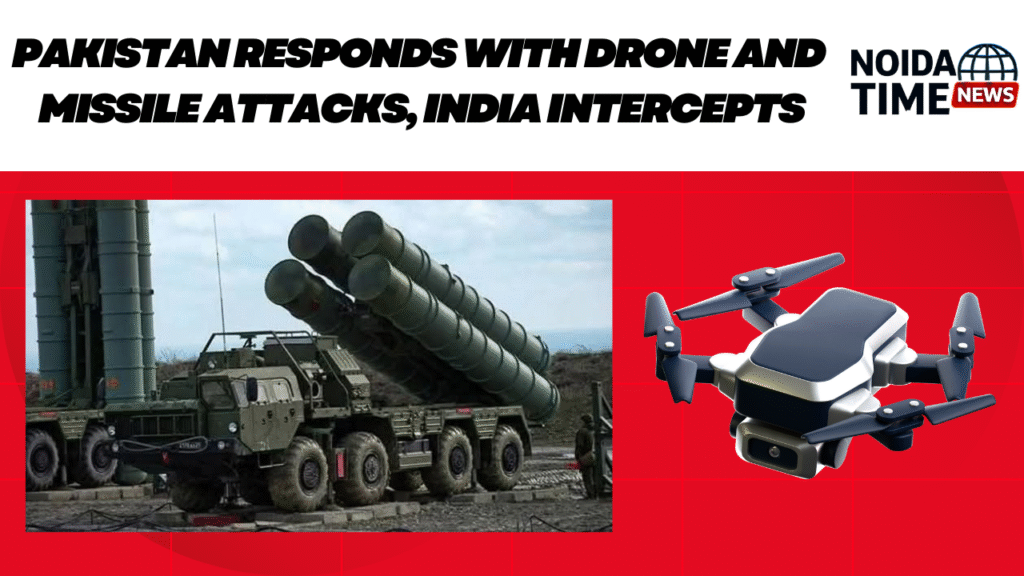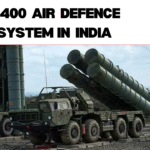Introduction
On the night of May 8, 2025, the India-Pakistan border saw a sharp escalation as Pakistan launched a series of drone and missile attacks targeting 15 Indian military installations across northern and western India. In a display of technological prowess, India’s advanced defense systems intercepted and neutralized every threat, ensuring no casualties or damage. This event, widely reported as Pakistan Responds with Drone and Missile Attacks, India Intercepts, underscores the evolving role of unmanned aerial systems in modern warfare and the fragile state of India-Pakistan relations. For Indians, it’s a moment of pride in our military’s capabilities but also a stark reminder of the tension ka tamasha that defines life near the border.
Background of the Conflict
The roots of this clash lie in the long-standing India-Pakistan rivalry, particularly over Kashmir, a region both nations claim but control only in part. The immediate trigger was a militant attack on April 22, 2025, in Pahalgam, Indian-administered Kashmir, where 25 tourists and a local were killed (Kashmir Attack). India blamed Pakistan-based groups, though Islamabad denied involvement. On May 7, India launched missile strikes on nine “terrorist infrastructure” sites in Pakistan, killing 31 people, according to Pakistani officials (BBC News). This set the stage for Pakistan’s retaliation.
Pakistan’s Drone and Missile Attacks
On May 8, 2025, Pakistan responded with a coordinated assault, targeting military stations in Jammu, Pathankot, Udhampur, and other sites in Punjab and Rajasthan. The attack involved eight missiles aimed at Jammu’s Satwari, Samba, Ranbir Singh Pura, and Arnia sectors, alongside a swarm of drones (Reuters). Pakistan’s military also claimed to have shot down 29 Indian drones over Karachi, Lahore, and Rawalpindi, alleging India was escalating the conflict. Pakistani Defence Minister Khawaja Muhammad Asif warned that further retaliation was “increasingly certain,” emphasizing Pakistan’s commitment to defending its sovereignty.
| Aspect | Details |
|---|---|
| Date | May 8, 2025 |
| Targets | Jammu, Pathankot, Udhampur, Punjab, Rajasthan; 15 military sites |
| Weapons Used | 8 missiles, multiple drones |
| Pakistan’s Claims | Shot down 29 Indian drones; denied targeting some sites like Pathankot |
| Outcome | All attacks intercepted by India; Pakistan reported civilian casualties from Indian strikes |
India’s Robust Defense
India’s response was swift and effective, neutralizing all threats with its Integrated Counter-UAS Grid and air defense systems. Covering 1,800 km from Awantipora in Jammu and Kashmir to Bhuj in Gujarat, the Counter-UAS Grid uses radars, radio frequency sensors, optical cameras, and acoustic detectors to detect drones. Countermeasures like signal jamming, GPS spoofing, and kinetic interceptors ensured no drone or missile reached its target.
India’s air defense systems include:
- S-400 Triumf (Russia): Tracks threats up to 600 km, with a 450 km range; three squadrons deployed, two more expected by 2026.
- MR-SAM & Barak 8 (India-Israel): 70-150 km range, used on land and sea.
- Akash (Indigenous): 30-50 km range, a desi pride.
- Spyder (Israel): 8-10 km range for sensitive areas.
- VSHORAD & Legacy Systems: Shoulder-fired missiles and older systems like Pechora, being phased out.
This operation, named Operation Sindoor, was a real-world test of India’s defenses, leaving Pakistani drone and missile remains scattered across Indian soil (Times of India). No casualties or damage were reported on India’s side, a testament to our fauji preparedness.
Casualties and Damage
While India reported no losses, Pakistan claimed significant damage from Indian strikes. Pakistani officials said 31 civilians, including women and children, were killed in India’s May 7 attacks, with additional casualties from downed Indian drones. In India, border cities like Amritsar and Jammu faced blackouts and internet suspensions, disrupting daily life.
Statements and Accusations
Both nations traded sharp accusations. India’s Ministry of Defence stated, “Indian Armed Forces targeted Air Defence Radars and systems in Pakistan,” matching Pakistan’s intensity (ABC News). Pakistan denied targeting civilian areas and called India’s accusations “politically motivated” (Al Jazeera). The tu-tu-main-main of blame has only deepened the mistrust.
International Response
The global community is on edge, given the nuclear capabilities of both nations. US President Donald Trump offered mediation, urging de-escalation. The United Nations and other powers called for restraint, emphasizing dialogue to prevent a wider conflict. The world’s concern reflects the high stakes of this border ka drama.
Implications and Analysis
The use of drones marks a shift in warfare, like moving from gilli-danda to high-tech gadgets. Drones offer precision and low risk but require advanced defenses, as India demonstrated. For border residents, this is a harsh reality—schools close, markets shut, and life feels like a curfew ka rerun. In Jammu, it’s not just about sirens; it’s about kids missing exams and farmers unable to work their fields. The resilience of these communities is inspiring, but the dil se dil tak hope is for peace.
India’s technological edge, showcased in Pakistan Responds with Drone and Missile Attacks, India Intercepts, strengthens its deterrence, but escalation risks remain. The nuclear shadow looms large, making diplomacy critical. This incident also highlights India’s growing defense capabilities, a jugaad of global and indigenous tech that’s sach mein world-class.
Conclusion
The events of May 8, 2025, captured in Pakistan Responds with Drone and Missile Attacks, India Intercepts, are a stark reminder of the fragile peace between India and Pakistan. India’s flawless defense is a point of national pride, but the human toll—families in fear, lives disrupted—tugs at the heart. It’s like watching a Border movie scene, only it’s real, and the stakes are higher. As both nations stand at a crossroads, the hope is for leaders to choose chai pe charcha over missiles, building a future where kids can study, not hide, and borders unite, not divide.



